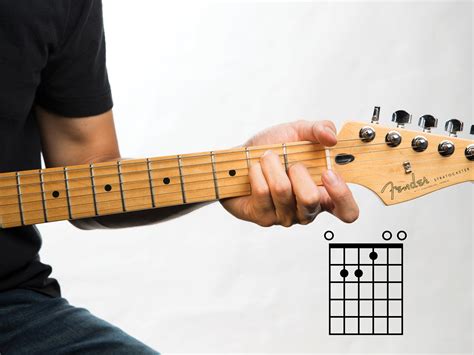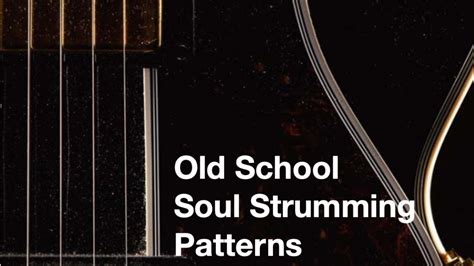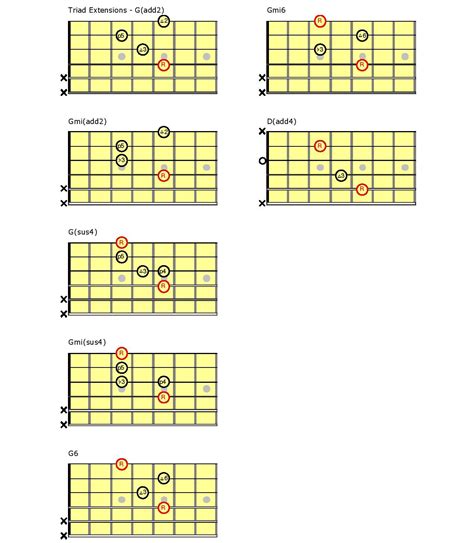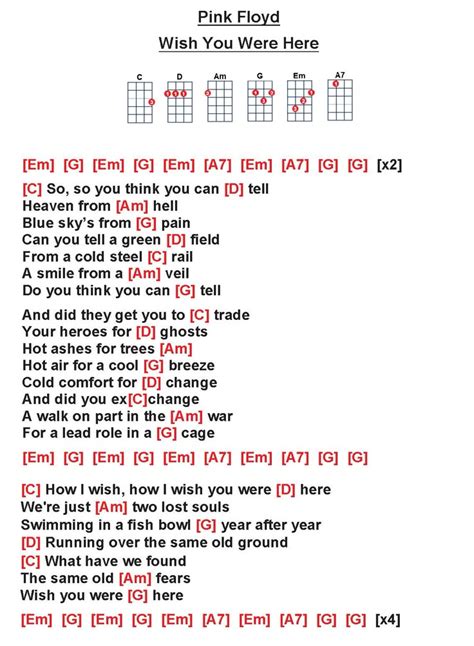There are some songs that aren't just collections of notes and words; they are feelings we can visit. Pink Floyd's "Wish You Were Here" is one of those timeless places—a space of longing, nostalgia, and raw, honest reflection. It's a song many of us have turned to when thinking of someone far away, a time long past, or even a version of ourselves we miss.
Translating this rock masterpiece to the humble, intimate voice of the ukulele is a beautiful act. It brings the song’s grand sense of absence into a personal, tangible space you can hold in your hands. Whether you're a beginner just learning the ropes or a seasoned player looking to capture the song's soul, this guide is for you. It’s more than just a list of chords; it’s a roadmap to playing the heartache and the hope woven into every note.
The Bare Bones: Your Essential Chord Shapes

Before we can pour our hearts into the song, we need to get our fingers in the right places. The beauty of this song on the ukulele is its simplicity. It's built on a foundation of common, easy-to-learn chords.
- G: The anchor of the song. Place your index finger on the C string (2nd fret), your middle finger on the A string (2nd fret), and your ring finger on the E string (3rd fret).
- C: A simple, bright chord. Place your ring finger on the A string (3rd fret).
- D: A full and resonant sound. Place your index finger on the G string (2nd fret), your middle finger on the C string (2nd fret), and your ring finger on the E string (2nd fret).
- Am (A minor): The sound of melancholy. Simply place your middle finger on the G string (2nd fret).
- Em (E minor): The chord for the iconic intro. Place your index finger on the A string (2nd fret), your middle finger on the E string (3rd fret), and your ring finger on the C string (4th fret).
Strumming with Soul: Capturing the Song's Heartbeat

This song is less about a complex strumming pattern and more about rhythm and feel. It breathes. Your strumming should feel like a steady, thoughtful conversation. Here are a few ways to approach it.
- The Campfire Strum (Beginner): Down - Down - Up - Up - Down - Up. This is the most common ukulele strum and it fits the song perfectly. Keep it steady and relaxed.
- The Heartbeat Strum: Down - (pause) - Down - Up. This creates a bit more space, mimicking the pensive feel of the original. Emphasize the first downstrum like a steady heartbeat.
- The Gentle Pick: Instead of strumming, try plucking the individual strings of each chord (G-C-E-A). This is perfect for the verses to give them a delicate, introspective feel.
- The "Push and Pull": Strum the verses softly and gently, then build the volume and intensity slightly for the chorus ("How I wish, how I wish you were here").
- The Rhythmic Mute: Try a "chunking" or "chucking" technique where you mute the strings with the palm of your hand right after a strum. A pattern like Down-Chunk-Up-Down-Chunk-Up adds a percussive, wistful feel.
- Follow the Vocals: Don't be afraid to let your strumming follow the rhythm of the lyrics. Let the words guide your hand.
- The Opening Fade-In: Start by lightly brushing just the G and C strings on the G chord, gradually bringing in the full chord to emulate the radio-tuning-in effect of the original track.
Nailing the Iconic Intro: That Famous Riff on Your Uke
The opening guitar riff is one of the most recognizable in music history. While a ukulele can't perfectly replicate a 12-string guitar, you can capture its essence beautifully. This section presents the main melody line. Play these notes over the underlying Em and G chords.
(This is a simplified tablature. A=1st string, E=2nd, C=3rd, G=4th. The number is the fret.)
First Lick (over Em):
A|--0-3-5--3-0----|
E|-------------3--|
Second Lick (over G):
A|--0-3-5--3--|
E|------------|
Combined Intro Walk-down:
(Play the Em chord)
A|--0-3-5--3-0----|
E|-------------3--|
(Switch to G chord)
A|--0-3-5--3--|
E|------------|
- Play these notes slowly and deliberately.
- Let each note ring out. The space *between* the notes is just as important.
- Try using a gentle fingerpicking style for this part.
- Don't worry about perfection; focus on the feeling.
Lyrical Cues: Matching Chords to a Heavy Heart

Here is the song structure with the chords placed directly over the words where the change happens. This helps you tie the musical shifts to the emotional narrative of the lyrics.
(Intro Riff over Em and G, then main acoustic riff over C/G - D/F# - Am/C - G)
(Acoustic Riff Chords)
[C] [D]
[Am] [G]
(Repeat)
(Verse 1)
[C]So, so you think you can [D]tell
Heaven from [Am]hell, blue skies from [G]pain
Can you tell a green [D]field from a cold steel [C]rail?
A smile from a [Am]veil? Do you think you can [G]tell?
(Verse 2)
And [C]did they get you to [D]trade
Your heroes for [Am]ghosts? Hot ashes for [G]trees?
Hot air for a [D]cool breeze? Cold comfort for [C]change?
And did you ex[Am]change a walk-on part in the [G]war
For a lead role in a cage?
(Chorus/Outro)
[C]How I wish, how I wish you were [D]here
We're just [Am]two lost souls swimming in a fish bowl, [G]year after year
[D]Running over the same old ground, [C]what have we found?
The same old [Am]fears
Wish you were [G]here.
Playing for Someone: Dedications & Emotional Nuances

This song is a message in a bottle. When you play it, you're often thinking of someone specific. Use that emotion to shape your performance. Here are some dedication ideas to channel your feelings into the music.
- For a Lost Loved One: Play the song slower than you normally would. Focus on the space between the chords, letting the silence hold the memory.
- For the Friend Who Moved Away: Emphasize the chorus. Play it a little louder and with more conviction, as if you’re trying to send the words across the miles.
- For Your Younger Self: When you sing "did they get you to trade," play the chords with a mix of tenderness and strength, acknowledging the journey you've been on.
- For a Relationship that Ended: Focus on the "two lost souls" line. Play the Am and G chords with a sense of gentle resignation, not anger.
- When You're Feeling Lost: Hum the intro riff instead of playing it. Let the melody itself be your guide back to a sense of center.
- As a Lullaby for a Heavy Heart: Play the entire song with your thumb instead of a pick or vigorous strum. Let the tone be soft, round, and comforting.
- For the Person Sitting Right Next to You: Play it quietly, looking at them during the final line, "Wish you were here." Sometimes the greatest distance isn't physical.
- For the State of the World: Play with a fiery, determined strum. Let the song be a protest against indifference and a plea for connection.
### Make It Your Own
Ultimately, "Wish You Were Here" is your story to tell. These chords and tips are just the starting point. Don't be afraid to experiment with your own strumming patterns, to slow it down, or to speed it up. Play it in a way that feels true to you and the person you're thinking of. The most beautiful version of this song is the one that comes directly from your heart, through your fingers, and out into the world. Now go on, and play your heart out.
